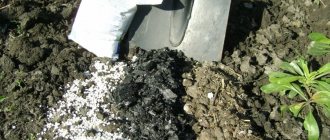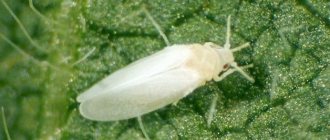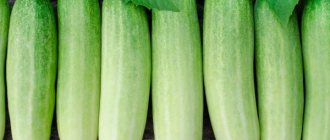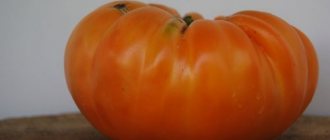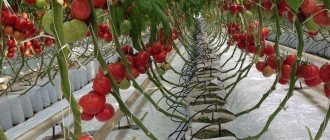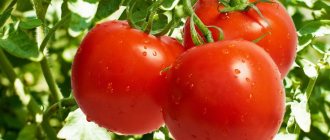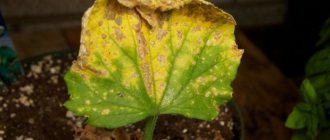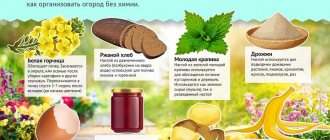Fusarium of tomatoes
Fusarium is a common and dangerous fungal disease of indoor, garden, and garden crops. The causative agents of the disease - fungi of the genus Fusarium - infect plants at any stage of development.
The infection penetrates through the soil and damaged parts: wounds, cuts. Toxins released by fungi spread throughout plant tissues and clog blood vessels. There is a gradual defeat of all parts, starting from the roots. With high humidity, the diseased plant becomes covered with a white, gray or pink coating.
Description of the disease
The causative agent of the disease, the soil fungus Fusarium, penetrates plant tissue through the root system. Pathogen spores gradually fill the space between the cells, the vessels through which nutrients move for the growth and development of plants.
This leads to malnutrition, dehydration and wilting of the crop.
In addition to the vessels, all above-ground parts of tomatoes, as well as the root system, are affected. At the same time, the fungus releases toxins that have a detrimental effect on the plant. All this ultimately leads to the death of culture.
The pathogen is active in soil and plant debris, from where it enters tomatoes through roots or mechanical damage. Withering of the bushes is the final stage, at which it is pointless to treat the vegetable. This is why it is so important to be able to recognize an infection by its early signs.
Nature of the disease
Fusarium is a fungal disease. A fungus called Fusarium oxysporum penetrates the young plant and begins to take root. More and more fungal spores are melting. They not only fill the entire space around, but also release substances that are harmful to the plant. Gradually, these waste products of the fungus clog the vessels through which juice and nutrients move.
Fusarium wilt affects not only the vascular system, but also roots, leaves, stems, and fruits.
A plant can become infected with fusarium at any time. And it reaches its greatest development during the period of formation and ripening of fruits. At this time, the plant is weakened because it spends all its energy on their development.
Symptoms
The first signal that something is wrong with the plants comes from the leaves. The color of the leaf blades changes from intense green to yellowish. Chlorotic spots appear on the surface of the leaves of the lower tier, and at the same time the veins become lighter.
The petioles become fragile, change shape, and then the leaves curl. Following the lower ones, the upper leaves begin to dry out and wither.
The lower part of the tomato stem becomes brown, and a brown coating (Fusarium spores) is visible on the root collar. Gradually, the upper shoots and leaves begin to fade, and the skin of the fruits on the bushes becomes covered with a whitish coating. The stem of such plants is easily pulled out of the soil; the cut reveals dark brown vessels clogged with fungal spores. It is impossible to save the bush at this stage of damage; it is carefully removed from the ridge and burned.
Reasons for appearance
Fusarium fungus affects tomatoes (and other vegetables) throughout the season, but the main peak often occurs at the ripening stage of tomatoes. At this time, the plant directs all its strength to fruiting, so the bushes themselves are weakened.
Causes of infection:
- waterlogging of the soil (occurs due to improper watering, during prolonged rains);
- dense plantings;
- too many shoots on tomato bushes;
- excess nitrogen, chlorine in fertilizing;
- poor lighting (especially in greenhouses or tunnels).
The pathogen is active at high humidity and during temperature changes (cool at night, hot during the day). One of the main reasons leading to the occurrence of fusarium is the cultivation of tomatoes in the same area for several seasons. Gardeners forget about observing crop rotation, and meanwhile, harmful fungi and bacteria accumulate in the soil, attacking the crop.
Weakened plants that have suffered stress (for example, after planting), after heavy pinching or removal of leaves are susceptible to the disease.
On a note! It is important to follow the norm, removing no more than 1-2 leaves at a time (lower tier)!
Advice from gardeners
Here are some recommendations for combating fusarium from experienced vegetable growers.
- Plowing the soil . In late autumn, it is necessary to loosen the soil with a plow to a depth of 20-25 cm. This will solve 90% of all problems. Fungi and some types of insects overwinter deep in the soil. During late plowing, the earth turns over and frost can kill all pests.
- Temperature regulation in greenhouses . Too hot a summer is another reason that affects the deterioration of tomatoes. The way to solve the problem is to whiten the glass surfaces of greenhouses.
- All attention to the rains . If a gardener cares about his harvest, he should tirelessly spray the plantings with preparations after each rain. It is rain that is the trigger that activates Fusarium wilt. Many gardeners believe: “If you missed processing after the rain, you’ll be in trouble.”
- Treatment of water for irrigation . Typically, summer cottages are located far outside the city, where there is no city water supply. Gardeners water tomatoes with rainwater or from natural reservoirs. Before watering, add Fitosporin-M to the water and leave for 20-30 minutes.
- Regular inspection of other plantings on the site . Dry rot can affect flowers, vegetables, trees and shrubs. Sick plantings are dug up and destroyed.
Fusarium is an extremely unpleasant and dangerous fungal disease. It is very difficult to fight him. It is necessary to learn to recognize the first signs of the appearance of dry rot on the site, and to take appropriate measures to destroy it as quickly as possible. This is the only way a person will be able to harvest a rich and healthy harvest of tomatoes.
What is the danger of fusarium
The disease should not be underestimated or the first signs of infection should be ignored, since without taking measures it is easy to lose the entire harvest. The root system is damaged, Fusarium root rot occurs, the plant stops feeding normally, and dies within 15-20 days.
The disease occurs rapidly, spreading throughout the tomatoes in the ridge, infecting healthy bushes. Unfortunately, in the final stages, when leaves and shoots wither en masse, vegetables cannot be helped. The only way out is to dig up the plants and destroy them.
Fusarium and verticillium wilt of tomatoes: differences
Tomatoes are affected by another fungus - the genus Verticillium, which lives in the soil and plant debris (chlamydospores or mycelium). It causes the disease verticillium wilt, the symptoms of which are similar to Fusarium wilt. Both infections affect weakened tomatoes with mechanical damage, causing yellowing and wilting of the leaves, and then death.
As a result of tracheomycosis wilt, blood vessels inside the stems are blocked, plants are poisoned by toxic substances released by pathogens. The signs of the diseases are very similar, so you can find out which fungus has infected the tomatoes only by cutting the stems (see photo):
- fusarium - vascular rings are brown, almost black;
- verticillium - the rings of blood vessels are light brown when cut.
With fusarium wilt, in addition to the vessels, the tissue around them can change color (become yellow). When Verticillium wilt is infected, there are no changes in tissues.
Diseased bushes cannot be treated, therefore they are identical in terms of the level of danger of infection.
Preventive measures
In the fight against disease, infection prevention measures come to the fore. It is necessary to create favorable conditions for the development and growth of tomatoes and exclude comfort for the reproduction of pathogens.
On a note! The result is brought by comprehensive measures when everything is taken into account: agricultural technology, disinfection, selection of seed material.
Basic Rules:
- Growing tomato varieties resistant to Fusarium wilt and having a resistance gene. Among them: Kupets, Testi, Vologda, Spartak, Blitz, Sorento, Lastochka.
- Treatment of seed material before sowing (treating with Fundazol, Strekar).
- Soil disinfection. Before planting, water the beds with copper sulfate (70 grams per bucket of water) and an aqueous solution of potassium permanganate. To till the soil in the fall, prepare a lime solution and add ash.
- Adding dolomite flour (on acidic soils), which eliminates the development of fungus.
- Deep digging of ridges in the fall.
- Mandatory removal of plant residues after each weeding and fruit harvesting.
- Disinfection of greenhouse structures and gardening equipment.
- Maintaining rotation of garden crops. The place where tomatoes are planted is changed every year, observing the principle of compatibility of vegetables. If it is not possible to change the ridges, then the top layer of soil is removed, replacing it with a new one. You cannot plant tomatoes after vegetables from the nightshade family. The best predecessors: cabbage, cucumbers, pumpkin.
To sow seeds for seedlings, prepare the soil in advance by steaming it in the oven or over a fire. You cannot take land to grow seedlings in greenhouses. Purchased mixtures or turf and leaf soil specially prepared in the fall are suitable.
Indeterminate tomatoes need to form bushes, remove shoots and leaves. Procedures must be systematic so that the crop does not become stressed after pruning. Scissors and knives are disinfected before each use, otherwise there is a risk of fungal spores being transferred from infected bushes to healthy ones.
In greenhouses, relative humidity is maintained, preventing fluctuations in indicators. On hot days, they open the windows and doors, creating drafts for the crop.
Bushes removed from the ridges are burned; they cannot be put into compost. Sick tomatoes are a source of infection, so when they fall into a compost pit, all layers of future fertilizer become infected. Using such compost on beds means reintroducing the infection to the area.
Many crops are susceptible to fusarium, and insects from cabbage can easily transfer the pathogens to tomatoes or potatoes. Carriers of infections are aphids, thrips, and whiteflies, so by destroying pests, gardeners simultaneously save the area from a dangerous disease.
Resistant varieties
Agronomists have long learned to breed plants that are resistant to various diseases . Therefore, there are a considerable number of cucumber varieties that are not afraid of Fusarium wilt. These are mainly hybrids labeled F1. If you doubt that you can protect your plantings from fusarium, it is better to choose one of them.
The most popular varieties:
- Dvoryansky is a mid-early hybrid that requires insect pollination and is resistant to fusarium, anthracnose, bacteriosis, cladospora blight, ascochyta blight and viral infections.
- Vocal is a high-yielding hybrid, resistant to fungal infections and unfavorable conditions: high humidity, temperature changes, lack of sunlight.
- Obsky is a hybrid with tasty and juicy fruits, resistant to fusarium, downy mildew, bacteriosis and temperature changes.
- Ideal and Vityaz are mid-early parthenocarpic hybrids.
- Zaychik, Zhukovsky, Hector and Alex are early ripening parthenocarpic hybrids.
- Sudar, Dolomite and Christina are early ripening bee-pollinated hybrids.
In addition to these varieties, cucumbers Ryabinushka, Dunyasha and Kapriz show resistance to fusarium. The manufacturer indicates the characteristic features of the variety in the description on the seed package, where you can also find information about the diseases to which they show resistance.
However, prevention should be carried out even when growing disease-resistant varieties . Be extremely attentive to cucumber bushes and other plantings in your greenhouse or on your plot - and you will get a healthy, tasty and high-quality harvest.
Treatment
The use of therapy is effective only in the early stages, when fungal spores have not yet completely clogged the plant vessels.
Use of chemicals
To help gardeners, various fungicides have been created that destroy the infectious agent. They are used 2-3 weeks before harvesting tomatoes, allowing time for the decomposition of harmful components.
Systemic fungicides (dosages are given for a ten-liter bucket of water):
- Vectra (sprayed on tomato leaves, used for watering, norm – 3 ml);
- Falcon (spraying, 3 mg of the drug);
- Fundazol (watering, dosage 10 grams).
Plants are treated in the first stages of the disease, then there is a chance of saving the tomatoes. Control measures by spraying with Bordeaux mixture, potassium permanganate or other contact agents are ineffective.
Nitrogen deficiency
Due to the lack of this element, tomatoes will experience poor growth. The leaves will be sparse, and the bush itself will be small in size. At the same time, the veins on the leaves will acquire a crimson hue, and over time the entire plant will begin to turn yellow and wither.
To solve this problem, you need to water the bushes with a urea solution. For every 10 liters of water you will need 30 grams of fertilizer.


